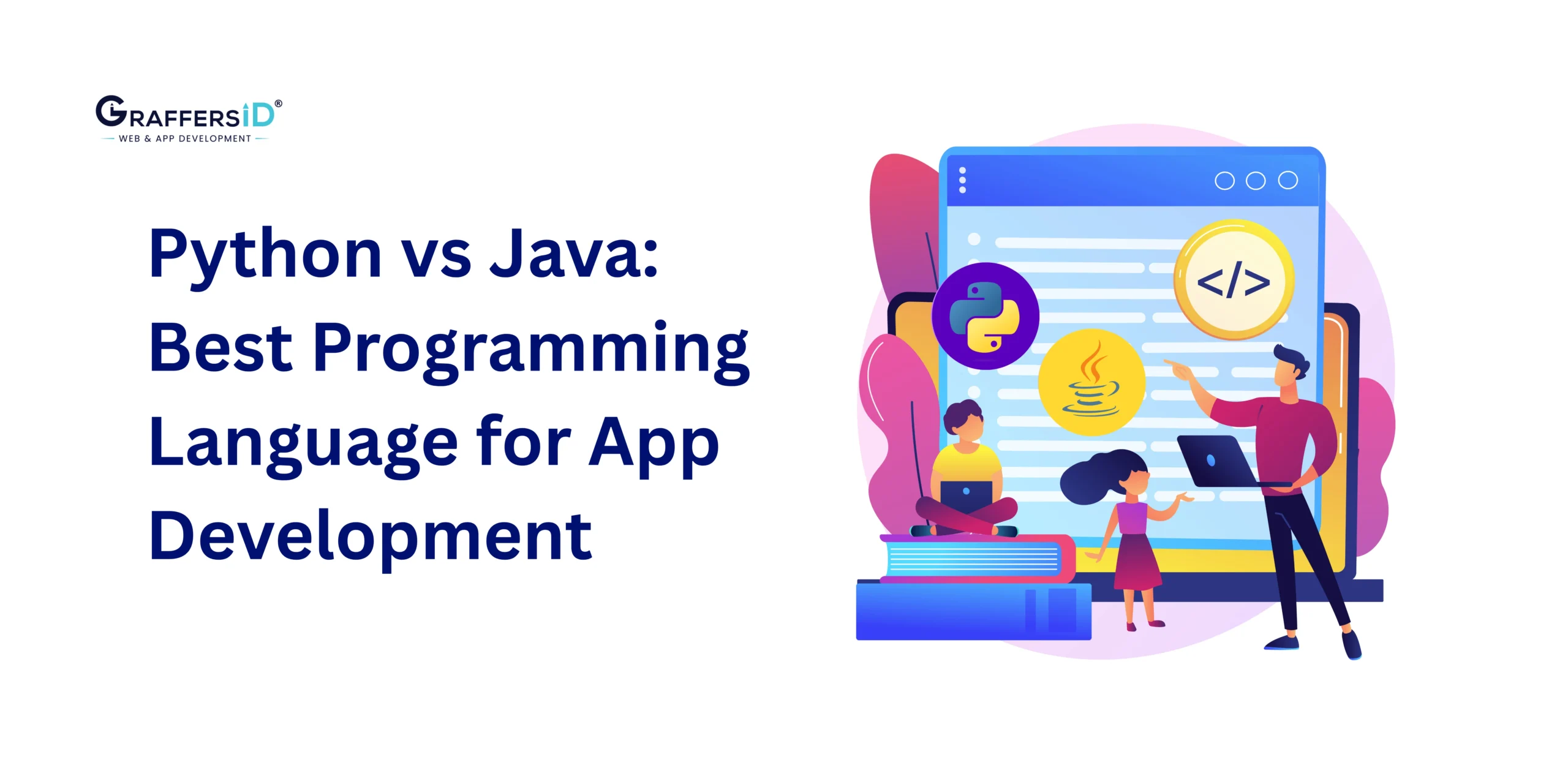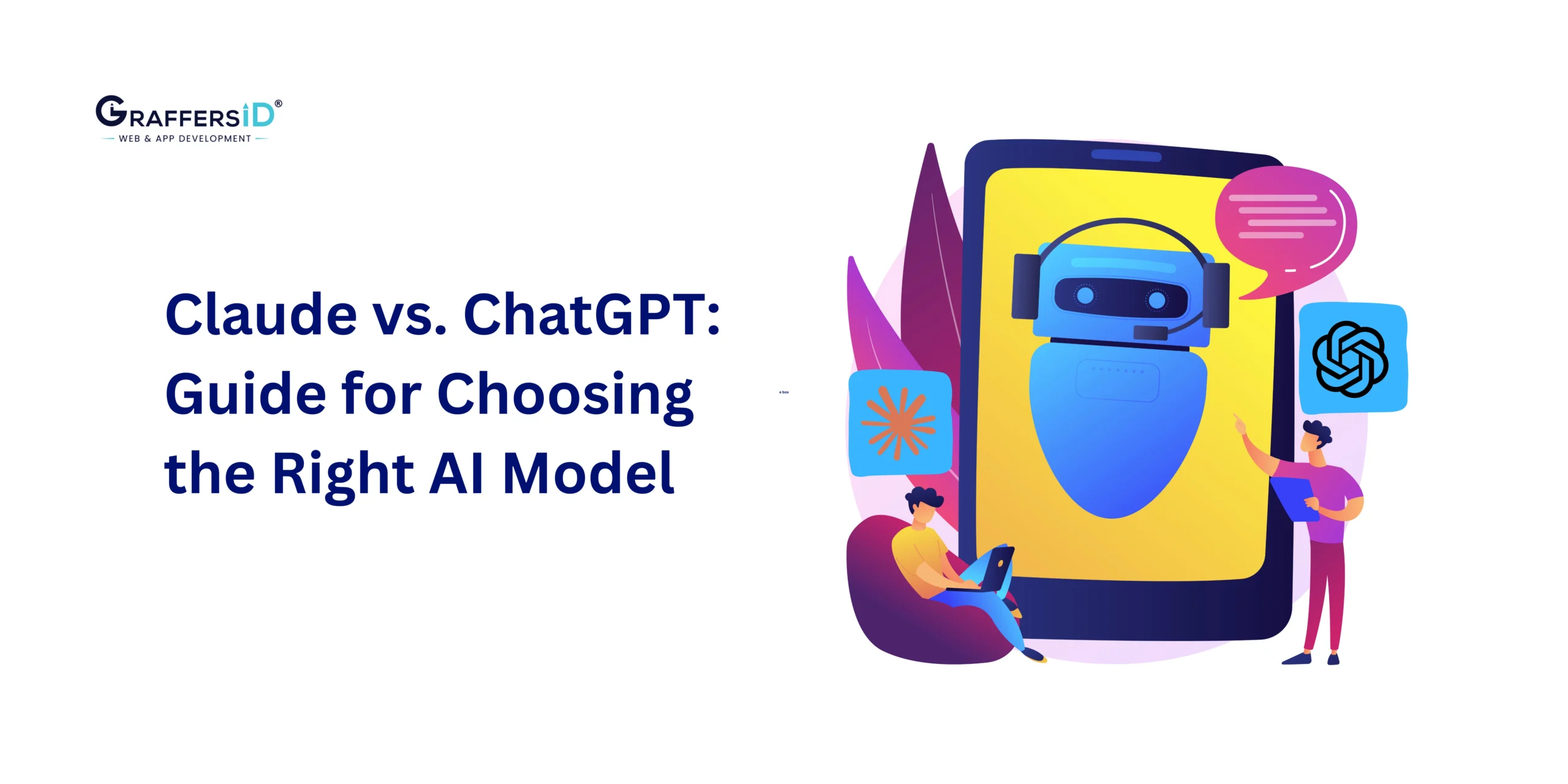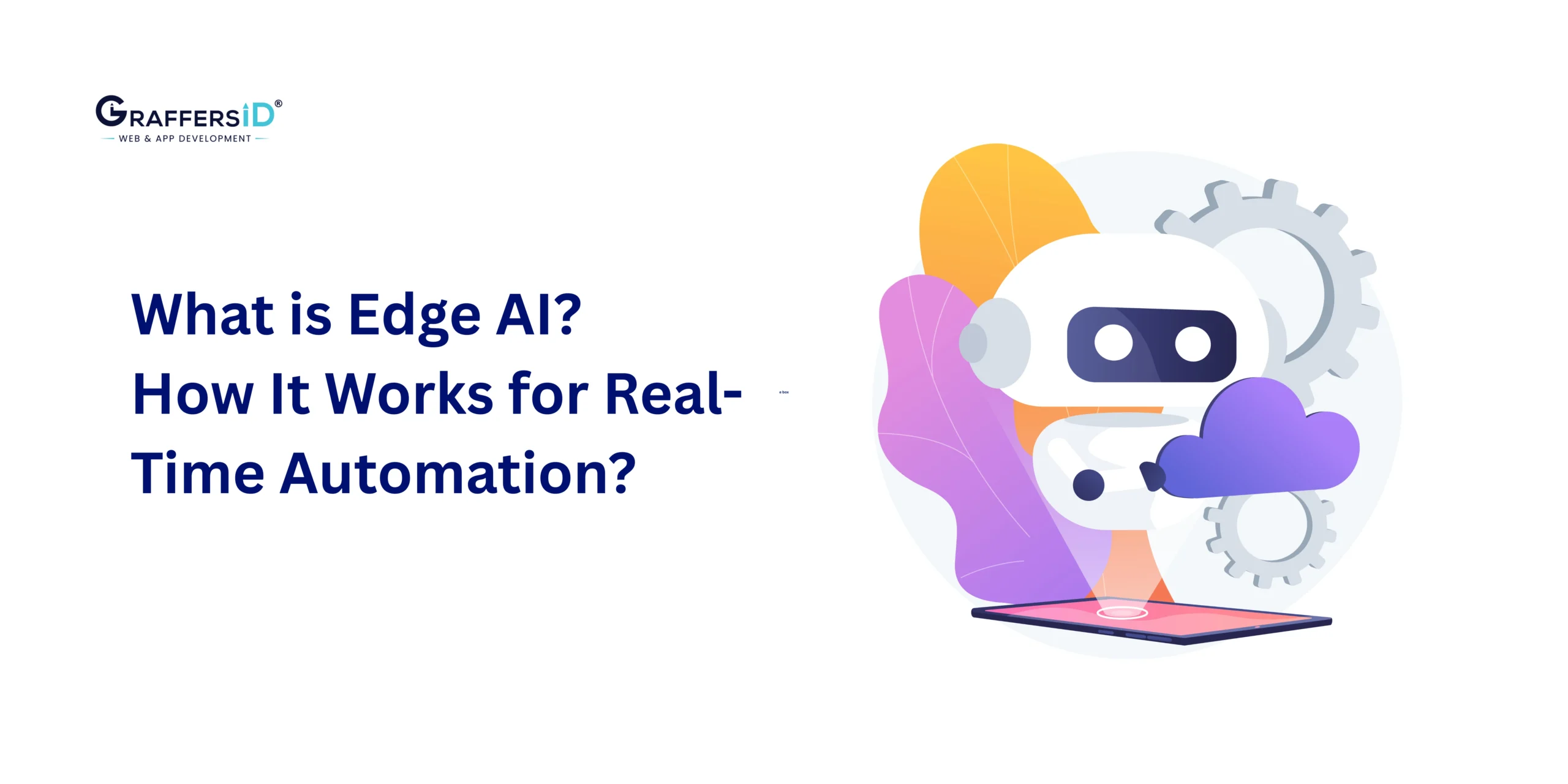In an era where every service comes with a need for app development, it’s pretty hard to select the right programming language for your needs. In fact, tech giants like Google, Instagram, and Netflix still use Python vs. Java for app development.
Regardless to say, both languages are highly efficient and help build stunning apps with interactive interfaces and add-on features. Both Python and Java for app development are relatively standard for web APIs, data science, machine learning, app development, artificial intelligence, and more. But one thing that is most challenging is choosing the best language for app development.
All About Python
To be straightforward, Python is a high-level, object-oriented programming language that uses dynamic semantics similar to the English language. It comes with features like built-in data structures, dynamic binding, and dynamic semantics. Acting as a popular choice for Rapid Application Development (RAD), Python is simple, offers a reduced cost of programming maintenance, and comes with features like easy-to-learn syntax for better readability.
Here’s what you need to know about the language:
Features of Python
- A general-purpose language with dynamic semantics that resembles the English language.
- Offers benefits like in-built data structures, dynamic binding, and dynamic typing, making it a perfect option for Rapid App Development (RAD).
- Used for deep learning, machine learning, and the AI field.
- Makes complicated programming easy.
- Easy to code and debug.
- Unlike Java, C++, and C, the syntax in Python is extremely easy to understand.
- Every different function has a separate code thread.
- Supports functional programming and object-oriented features.
- Can run on different OS
- Offers a diverse collection of built-in libraries for images, documents, and browsers.
Key Characteristics of Python
- Companies that use Python: Dropbox, Netflix, Google, YouTube, Uber, and Pinterest
- Preferred for: Language development, operating systems, machine learning apps, games, graphic design, image processing, and prototyping.
- Code: No semicolons needed, small lines.
- Syntax: Indentation for readability required, braces not needed.
- Dynamic or static: Dynamic
- Portability: Yes
- Ease: Easier than Java
- Speed: Faster than Java
- Machine learning libraries: Pytorch machine learning library, TensorFlow
- Backend Frameworks: Flask and Django for building apps.
- Engines for game development: Panda3D and Cocos
All About Java
Like Python, Java is a class-based, general-purpose, object-oriented programming language, mainly famous for having fewer implementation dependencies. Commonly used for developing applications in laptops, gaming consoles, scientific supercomputers, cell phones, and data centers, Java is secure, fast, and reliable, making it one of the best languages for app development.
Here’s what you need to know about Java:
Features of Java
- Apps developed from Java are highly responsive and interactive.
- It is based on C and C++.
- It is a fully object-oriented language.
- It can run on any platform, thanks to its Java Virtual Machine.
- Java can support multiple open-source libraries.
- The language and code threads built on Java are less prone to errors because the language uses a static-typing syntax.
- It is pretty popular among developers.
- It comes with a multi-threaded environment where developers can perform multiple tasks at the same time.
- It is easier to navigate libraries.
- Developers can make reusable code and standard programs.
Key Characteristics of Java
- Companies that use Java: Airbnb, Spotify, Pinterest, Cash App, and Twitter.
- Best for: web app services, mobile applications, big-scale enterprise solutions, Desktop GUI apps, and embedded systems.
- Code: Operators, lengthy lines, and blocks.
- Syntax: Semicolons are required at the end of lines, and the whole program requires blocks in curly braces.
- Portability: Due to the JVM, Java can be used on any platform.
- Speed: Slower than Python.
- Ease: Easier than Python.
- Backend frameworks: Blade and Spring
- Libraries for machine learning: Mallet, Weka, Deeplearning4j, MOA
- Engines for game development: JMonkeyEngine
To find out more about which language is best for app development, here is a descriptive analysis of both languages.
Python vs. Java are extensively used as general-purpose programming languages. According to the latest TIOBE Programming Community Index, Java is more popular among developers.
At present, developers use Java and Python for developing a wide variety of desktop and web applications. Both programming languages are widely used for data science and machine learning.
However, unlike Python, Java is one of the two official programming languages for Android. Java was designed to help dedicated Java developers in building software applications that can be implemented with minimal dependencies. Whereas Python is the only programming language with a design philosophy that emphasizes code readability.
Hence, it is essential for programmers to understand the main differences between Python and Java.
Read Also: Java vs JavaScript
Python vs. Java: Detailed Comparison
Types of Programming Languages
Both Python and Java come under the category of high-level programming languages. However, Python is an interpreted programming language. Developers who work on Python are obliged to use operating system-specific Python interpreters to execute the Python code directly. They can even choose from several implementations of programming languages.
In contrast to this, Java is a compiled programming language. Java code is initially compiled into bytecode that runs on any platform with a Java Virtual Machine. The developers can port the compiled Java code from one platform to another seamlessly.
Developer Productivity
One of the most important differences between Python vs. Java is that Java is statically typed, whereas Python is dynamically typed. This means that in Python, it is not necessary to declare the type of a variable when writing code. Python is known for being short and readable. It allows the developer to do some things with just a few lines of code.
Being dynamically typed and concise, it is easy to develop applications in Python swiftly than in Java. People claim that the developer can be up to 10 times more productive while writing code in Python. Despite this, Java is less prone to bugs than Python owing to its static type system.
Python and Java, both languages, offer an efficiency boost with a wide variety of web development frameworks such as Spring and Django. This enables developers to quickly build everything, whether it is a small web app or a high-traffic application.
Speed
Java is a compiled language, whereas Python is interpreted. This means that if speed is what you want from your project, then neither of the languages stands to fulfill your goal. However, Java has the edge in most environments.
But, speed is a relative factor. If Python’s speed makes it an undesirable language, the other benefits, such as the rapid development process, can outweigh this negative point.
It is important to note here that it is possible to achieve C-like performance with the use of Cython, a popular superset of Python for machine learning algorithms.
Community and Library Support
Python and Java are both open-source languages with large, vibrant communities that contribute to the languages and offer huge support.
Both languages come with an extensive array of libraries, which are supported by a large number of skilled developers. If you are not able to do something within the language itself, you will surely find a library for it.
Read Also: PHP or Python: Which Language to Choose for Server-Side Development?
Common Difference Between Python And Java
| Aspect | Python | Java |
|---|---|---|
| Definition | An interpreted, high-level programming language with dynamic semantics. | A compiled, class-based, object-oriented programming language with static semantics. |
| Syntax | Uses a concise and expressive syntax that is easy to read and write. | Uses a more verbose and formal syntax that can be more difficult to read and write. |
| Learning curve | Has a relatively low learning curve, especially for beginners. | Has a steeper learning curve due to its more complex syntax and concepts. |
| Performance | Generally slower than Java due to its interpreted nature. | Generally faster than Python due to its compiled nature. |
| Memory management | Uses automatic memory management (garbage collection). | Requires manual memory management using pointers and memory allocation. |
| Platform independence | Runs on multiple platforms, including Windows, macOS, Linux, and mobile devices. | Runs on multiple platforms, but requires a Java Virtual Machine (JVM) to be installed. |
| Community support | Has a large and active community with a vast selection of libraries and frameworks. | Has a large and active community with a vast selection of libraries and frameworks. |
| Use cases | Well-suited for data analysis, machine learning, and scientific computing. | Well-suited for building large-scale enterprise applications and web services. |
Python vs. Java: Pros and Cons
Python, a versatile and high-level programming language, has been making waves in the world of technology for several years. Its simplicity and readability have attracted a vast community of developers, leading to its widespread adoption. However, like any tool, Python comes with its own set of pros and cons. In this in-depth exploration, we’ll delve into the strengths and weaknesses of Python to help you make an informed decision when choosing a programming language for your next project.
Pros of Python
1. Readability and Maintainability
Python’s clean and concise syntax is one of its standout features. The emphasis on readability and indentation-based code structure makes it an excellent choice for both beginners and experienced developers alike. This readability leads to code that is not only easy to write but also easy to understand and maintain, reducing the chances of introducing bugs during development and simplifying the debugging process.
2. Extensive Standard Library
Python boasts an extensive standard library that provides a wide range of modules and packages for various tasks, from web development and data analysis to networking and machine learning. This rich ecosystem eliminates the need to reinvent the wheel and accelerates development. Whether you need to work with regular expressions, manipulate files, or create graphical user interfaces, Python’s standard library likely has a module that can save you time and effort.
3. Cross-Platform Compatibility
Python’s versatility extends to its cross-platform compatibility. It is available on multiple platforms, including Windows, macOS, and Linux. This cross-platform capability ensures that your Python code can run seamlessly on different operating systems without the need for extensive modifications. This feature simplifies the process of developing software that reaches a broad audience.
4. Strong Community and Support
Python’s large and active community is one of its greatest assets. With millions of developers worldwide, you can easily find help, tutorials, and documentation online. There are numerous forums, mailing lists, and social media groups dedicated to Python, making it a beginner-friendly language where newcomers can find support and experienced developers can share their knowledge. The community also contributes to the continuous improvement of Python through regular updates and enhancements.
5. Versatility
One of Python’s defining characteristics is its versatility. It can be used for a wide variety of applications, from web development using frameworks like Django and Flask to scientific computing with libraries such as NumPy and pandas. Its versatility makes it a top choice for many use cases, ranging from small scripting tasks to large-scale, complex software projects. This adaptability allows developers to use Python throughout the entire software development process.
6. Integration Capabilities
Python’s ability to easily integrate with other languages, such as C, C++, and Java, sets it apart from many other programming languages. This feature allows developers to leverage existing codebases written in other languages and take advantage of specialized libraries when needed. Whether you’re working on a project that requires the speed and efficiency of low-level languages or integrating with external APIs, Python’s integration capabilities ensure that you have the flexibility to meet your project’s requirements.
7. Rapid Prototyping
Python’s dynamic typing and high-level data structures facilitate rapid prototyping and quick development cycles. This is especially beneficial for startups and projects with tight deadlines. With Python, you can quickly test ideas, iterate on prototypes, and bring your concepts to life without the overhead of managing complex data types or dealing with low-level details. The ability to develop and refine your ideas rapidly can be a significant advantage in today’s fast-paced development environment.
Cons of Python
1. Slower Execution Speed
Python is an interpreted language, which can result in slower execution speeds compared to compiled languages like C++ or Java. While this may not be a concern for most applications, it can be a drawback for high-performance tasks where speed is critical. To address this limitation, Python offers various tools and libraries, such as Cython, which allow developers to write performance-critical code in Python while still achieving near-native execution speeds.
2. Global Interpreter Lock (GIL)
Python’s Global Interpreter Lock (GIL) can hinder the execution of multi-threaded programs, as it allows only one thread to execute at a time. This limitation can impact the performance of CPU-bound applications that rely on parallelism to maximize efficiency. To work around the GIL, developers often use multiprocessing or other concurrency techniques, which may add complexity to their code.
3. Limited Mobile Development Support
While Python can be used for mobile app development using frameworks like Kivy or BeeWare, it is not as widely adopted as languages like Swift for iOS or Kotlin for Android. This limited adoption can be a disadvantage if you’re targeting mobile platforms, as you may encounter fewer resources and community support compared to native development languages.
4. Memory Consumption
Python’s dynamic typing and automatic memory management via garbage collection can lead to higher memory consumption compared to languages with manual memory management, such as C or C++. This may be a concern for resource-intensive applications or projects with strict memory constraints. Developers can mitigate this issue by optimizing their code and using memory profiling tools to identify and address memory leaks.
5. Limited Mobile Development Support
While Python can be used for mobile app development using frameworks like Kivy or BeeWare, it is not as widely adopted as languages like Swift for iOS or Kotlin for Android. This limited adoption can be a disadvantage if you’re targeting mobile platforms, as you may encounter fewer resources and community support compared to native development languages.
6. Memory Consumption
Python’s dynamic typing and automatic memory management via garbage collection can lead to higher memory consumption compared to languages with manual memory management, such as C or C++. This may be a concern for resource-intensive applications or projects with strict memory constraints. Developers can mitigate this issue by optimizing their code and using memory profiling tools to identify and address memory leaks.
In conclusion, Python’s strengths, such as its readability, extensive library support, and versatility, make it an excellent choice for a wide range of projects, especially those focused on rapid development and ease of use. However, its drawbacks, including slower execution speed and the Global Interpreter Lock (GIL), may limit its suitability for certain high-performance and multi-threaded applications.
Pros of Java
1. Platform Independence
Java’s “Write Once, Run Anywhere” principle is one of its most significant advantages. It achieves this through the Java Virtual Machine (JVM), which allows Java applications to run on any platform that has a compatible JVM implementation. This cross-platform compatibility ensures that your Java code can be executed on Windows, macOS, Linux, and more, without modification, making it ideal for developing applications for diverse environments.
2. Strong Type System
Java’s statically typed nature, combined with a strong type system, enhances code reliability and maintainability. Type checking at compile-time catches many errors before they become runtime issues, reducing the likelihood of unexpected crashes and errors in production.
3. Rich Standard Library
Java offers a comprehensive standard library that covers a wide range of functionalities. This extensive collection of classes and packages simplifies common programming tasks, such as file handling, networking, and database connectivity. Developers can leverage these libraries to save time and effort, leading to faster development cycles.
4. Large and Active Community
Java has a massive and active developer community. This means abundant resources, tutorials, forums, and libraries available online, making it easier for developers to find solutions, share knowledge, and collaborate. The community’s contributions also keep Java up-to-date and relevant with regular updates and enhancements.
5. Scalability
Java’s scalability is a crucial factor for enterprise-level applications. Its robustness and support for multithreading and concurrent programming allow it to handle heavy workloads and scale well. This makes Java an excellent choice for building large-scale web applications, backend systems, and enterprise software solutions.
6. Security
Java prioritizes security with features like the “sandboxing” of applets and robust security mechanisms. This has made it a preferred choice for applications where security is paramount, such as financial services, healthcare, and government sectors.
7. Object-Oriented
Java’s object-oriented programming (OOP) features promote modular and maintainable code. Developers can structure their programs using classes and objects, leading to more organized, reusable, and easier-to-understand code.
Cons of Java:
1. Verbosity
One of the criticisms often leveled against Java is its verbosity. Java code tends to be longer and more verbose compared to languages like Python or Ruby. This can slow down development and lead to larger codebases that are harder to maintain.
2. Slower Execution Speed
Java is an interpreted and compiled language, which can result in slower execution speeds compared to natively compiled languages like C or C++. While the performance gap has narrowed with modern Just-In-Time (JIT) compilers, Java may not be the best choice for applications that require extremely high computational performance.
3. Memory Consumption
Java applications tend to consume more memory compared to languages with manual memory management. The Java Virtual Machine manages memory automatically, which can lead to inefficiencies in memory usage, making it less suitable for resource-constrained environments.
4. Steeper Learning Curve
Java’s rich ecosystem and extensive libraries come at the cost of a steeper learning curve, especially for beginners. Learning to navigate the intricacies of Java’s class-based inheritance and object-oriented programming can be challenging for those new to programming.
5. Limited Support for Modern Language Features
While Java has evolved over the years, it has been criticized for lagging behind some modern programming languages in terms of language features. Features such as lambda expressions and functional programming constructs have been introduced in later versions of Java but may not be as expressive as those in languages like Python or JavaScript.
In conclusion, Java’s strengths, such as platform independence, strong typing, and scalability, make it a versatile choice for a wide range of applications, especially in enterprise and security-focused domains. However, its verbosity, relatively slower execution speed, and memory consumption may be considered drawbacks, particularly in contexts where performance and resource efficiency are critical.
How to find the best language for your application?
While Python and Java share many similarities and have a diverse range of uses, it would be wrong to say that they suit equally for any type of project. In addition to comparing the general pros and cons of each language, it is also important to consider the specific needs of your application to make sure you choose the best language.
Speed and Budget
Python is a highly preferred language when the speed of development and budget are primary concerns for your project. Python is dynamically typed, and along with this, it also has concise code and a myriad of frameworks available, which aids in building and deploying the application in record time. Apart from this, it also has the benefit of lowering development costs.
This is particularly valuable when you want to release an app under the MVP model or build and test prototypes.
Mobile Development
One of the major drawbacks of Python is that it is not native to the mobile environment. Neither of the major mobile platforms, such as Android and iOS, supports Python as an official programming language. No doubt, an application can be developed in Python; however, it will require more effort on the part of the developer to deliver a rich user experience.
Java, on the other hand, is one of the preferred languages when it comes to Android app development.
Security
For developing applications, which is needed to be highly secure, Java is a preferred language. Although an experienced and skilled programmer can develop a very secure app in Python, Java is widely used for banking and other such web applications due to its strength in security and functionality.
Java includes access to security features such as access control, advanced authentication, and cryptography that keep your web application secure.
A combination of highly powerful specialized libraries and flexibility means that Python is the way to go when it comes to a project that is biased toward deep learning, machine learning, data science, and image recognition.
Summing Up
Python and Java are two highly popular programming languages which is similar in many ways. However, that does not mean that both equal suits for every project. Weigh the pros and cons of each language, match its strengths, and then select the best language for your app.
Python stands out in terms of developer productivity, as it enables the rapid development of applications. Java has the edge in terms of speed. Both languages benefit from active and supportive developer communities and a huge array of libraries.
In terms of ideal use cases, Java is better suited for mobile app development, being one of the preferred programming languages for Android. It is a highly regarded language for banking applications where security is a major concern.
If you are looking for developers who are experienced in these languages, contact us at GraffersID today!





